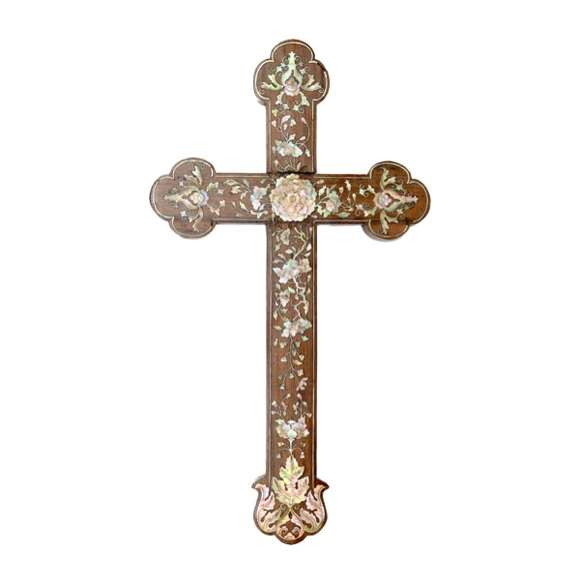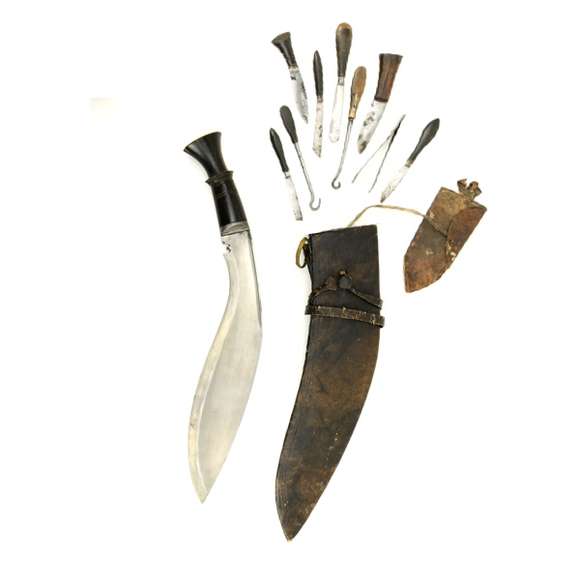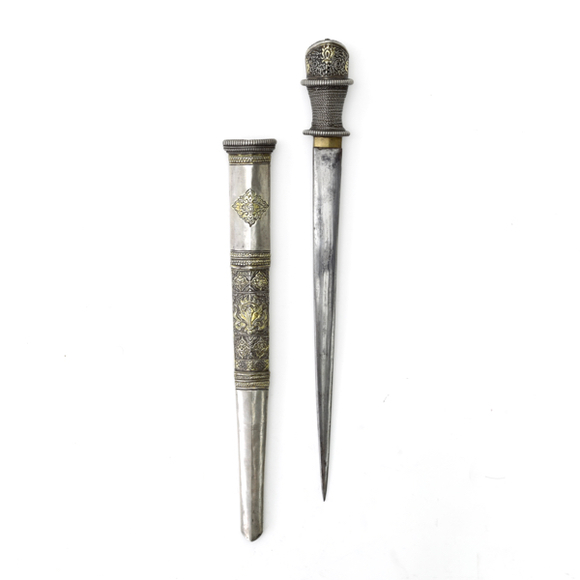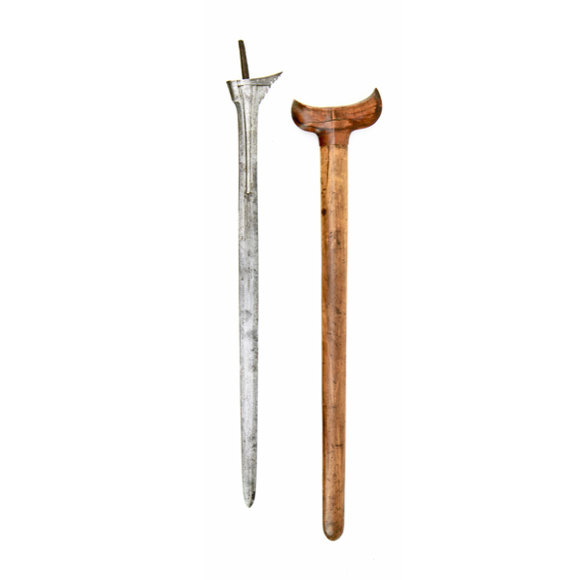Language: Vietnamese
Source: Period dictionary
Description
Kiếm (劍) is the double-edged straightsword of Vietnam. It bears many similarities to the jiàn (劍) of China and is in fact modeled on Ming dynasty straightswords.
 A very good Vietnamese kiếm with quality, heavy blade.
A very good Vietnamese kiếm with quality, heavy blade.
Like their Chinese counterparts, they come as single or double weapons in one scabbard, called song kiếm (雙劍). Their blades are usually much narrower than those on Chinese jian.
Compared to Chinese work, the Vietnamese kiếm is usually a lot more ornamental in nature and exhibiting finer craftsmanship. The Chinese jiàn, on the other hand, is usually more sturdy and practical.
Use for sabers
Kiếm (劍) can also be pronounced gươm, the word used to describe the narrow-bladed Vietnamese saber.
The character 劍 appears, for example, inlaid in gold on the blade of a saber that used to belong to Emperor Gia Long 1802-1820.
Gươm, in turn, is usually written 鎌.
Ceremonial kiếm (劍)
Kiếm were emblems of rank for the Mandarin class of the Nguyễn dynasty (1885–1945) and highly ornamental ceremonial examples were typically worn by the Mandarins and their retainers.
 A ceremonial kiếm with stone grip, fine silver mounts, and a mother-of-pearl inlaid hardwood scabbard.
A ceremonial kiếm with stone grip, fine silver mounts, and a mother-of-pearl inlaid hardwood scabbard.
Fittings of such ceremonial swords are often silver, chased and chiseled, with precious hardwood scabbards with fine mother of pearl inlay.
Handles can be wood, ivory, elephant tooth, marine ivory, jade, or all-metal such as silver or copper, inlaid with metals of contrasting colors.
While the overall style often reminds of Chinese Ming swords, the decor is often a mix of Chinese and Vietnamese elements but sometimes purely Vietnamese.
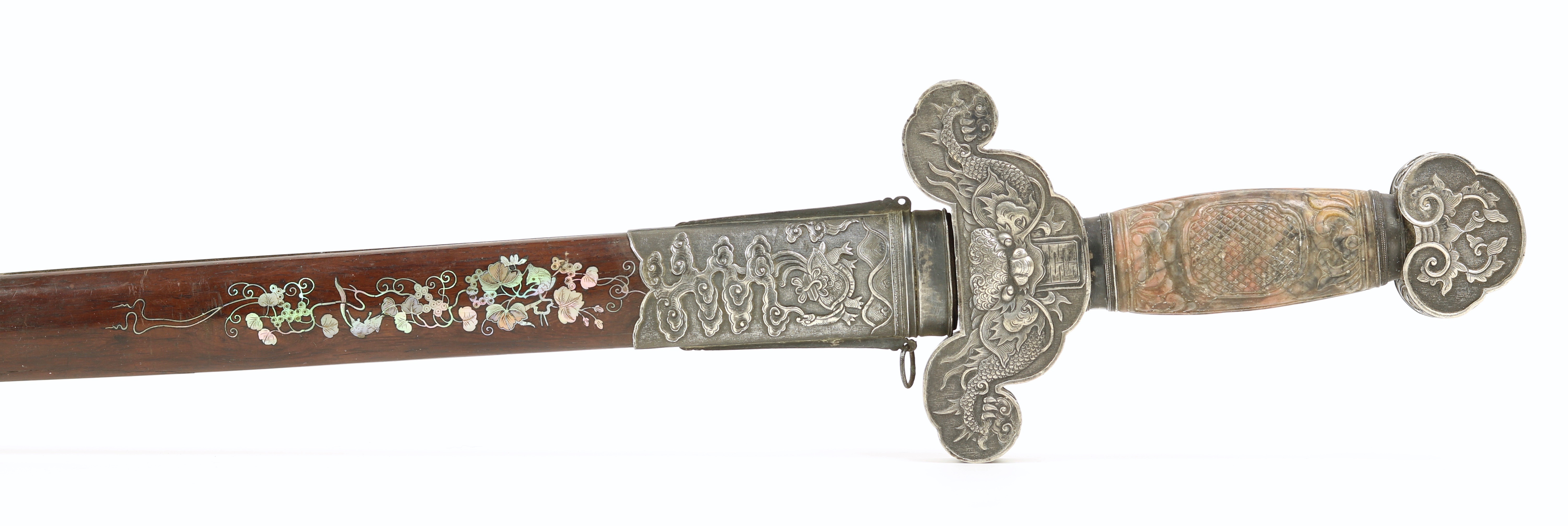 Fantastic workmanship on a Nguyễn dynasty ceremonial kiếm.
Fantastic workmanship on a Nguyễn dynasty ceremonial kiếm.

